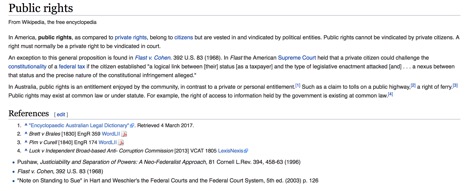In recent years, there have been at least two occasions during oral argument where the Federal Circuit has inquired of the USPTO if additional judges are selected for expanded panels so as to decide a matter in a certain way. In the first oral argument — Yissum Research Development Co. v. Sony Corp. — the USPTO was quite frank in acknowledging that the PTO can select judges for a reconfigured panel so as to achieve a decision opposite to that of the original panel: [Listen].
PTO: And, there’s really only one outlier decision, the SkyHawke decision, and there are over twenty decisions involving joinder where the . . . .
Judge Taranto: And, anytime there has been a seeming other-outlier you’ve engaged the power to reconfigure the panel so as to get the result you want?
PTO: Yes, your Honor.
Judge Taranto: And, you don’t see a problem with that?
PTO: Your Honor, the Director is trying to ensure that her policy position is being enforced by the panels.
Judge Taranto: The Director is not given adjudicatory authority, right, under § 6 of the statute that gives it to the Board?
PTO: Right. To clarify, the Director is a member of the Board. But, your Honor is correct . . . .
Judge Taranto: But after the panel is chosen, I’m not sure I see the authority there to engage in case specific re-adjudication from the Director after the panel has been selected.
PTO: That’s correct, once the panel has been set, it has the adjudicatory authority and the . . . .
Judge Taranto: Until, in your view, it’s reset by adding a few members who will come out the other way?
PTO: That’s correct, your Honor. We believe that’s what Alappat holds.
In a subsequent oral argument — Nidec v. Zhongshan — the USPTO was a bit less direct with its answer when asked the question of whether judges are selected to rule a certain way: [Listen].
Judge Reyna: What kind of uniformity or certainty do we have in that where the PTAB can look at a prior decision and say well we don’t like that, let’s jump back in there and change that?
PTO: Well, ….
Judge Wallach: How does the Director choose which judge to assign to expand the panel?
PTO: Uh, that’s provided, your Honor, by our standard operating procedure. And, the Chief Judge actually makes that decision. And, the judges are selected based on their technical and legal competency. And, over the years, many many panels at the Board have been expanded. In fact if you looked at the thirty . . . .
Judge Reyna: Are they selected on whether they’re going to rule in a certain way?
PTO: Uh, well, people can be placed on the panel . . . for example, the Director can place him or herself on the panel, and certainly the Director knows how they’re going to rule. Nidec has not said and they say at their blue brief at page 43 that they don’t challenge the independence of these judges on this panel. Um, these judges were not selected and told to make a particular decision. If judges could be told to make a particular decision, there would be no need to expand a panel in the first place.
You can listen to the entire oral argument of Yissum Research Development Co. v. Sony Corp here: [Listen].
You can listen to the PTO’s presentation in Yissum here: [Listen].
You can read the court’s Rule 36 judgment in Yissum here: [Link].
You can listen to the entire oral argument of Nidec Motor Corp. v. Zhongshan Broad Ocean Motor Co. here: [Listen].
You can listen to the PTO’s presentation in Nidec here. [Listen].
An opinion in Nidec has not issued, yet. The outcome will depend, in part, on whether the CAFC satisfies itself that it has jurisdiction to rule on a decision of a stacked panel.
__________________________________________________________________
Update: August 27, 2017 and August 28, 2017
A third occasion where the Federal Circuit noted the issue of panel-stacking was this past May in the en banc oral argument of WI-FI One v. Broadcom. During that oral argument, Judge Wallach noted that on the list of “shenanigans” — see the Supreme Court’s Cuozzo decision for more context on the “shenanigans” reference — was the Director appointing judges to come out the way that the Director wanted a case to be decided on re-hearing. [Listen].
Judge Wallach: No, no, no . . . according to the Government, it’s not individual panels —it’s the Director. Because, on the list of shenanigans, the Director, if the Director doesn’t like a decision, and someone seeks an expanded panel, can appoint judges who take a different position which is more in line with what the Director wants. So, in the long run, what you’re really saying is, it’s the Director who decides it, as opposed to this court.
Later in the oral argument, Judge Wallach would ask the attorney for the opposing side similar questions [Listen]:
Judge Wallach: The situation I described to your esteemed colleague where in effect the Director puts his or her thumb on the outcome . . . shenanigan or not? It’s within the written procedures.
Attorney: So, your hypothetical is the Director stacks the Board?
Judge Wallach: Yeah, more than a hypothetical, it happens all the time. It’s a request for reconsideration with a larger panel.
Attorney: That’s within the Director’s authority. The make-up of the Board to review the petition is within the Director’s authority. Whether that rises to the level of shenanigans or not . . . .
Judge Wallach: Aren’t there fundamental rule of law questions there . . . basic things like predictability and uniformity and transparency of judgments and neutrality of decision makers? And don’t we review that kind of thing?
